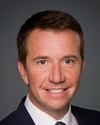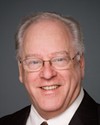Thank you.
Evidence of meeting #88 for Finance in the 41st Parliament, 1st Session. (The original version is on Parliament’s site, as are the minutes.) The winning word was rate.
A video is available from Parliament.
Evidence of meeting #88 for Finance in the 41st Parliament, 1st Session. (The original version is on Parliament’s site, as are the minutes.) The winning word was rate.
A video is available from Parliament.
4:40 p.m.
Liberal

Scott Brison Liberal Kings—Hants, NS
Yes, certainly.
In the past, employee contributions under the public service pension plan were below 30%. Can you confirm that the previous Liberal government changed the rules in 1999 to increase employee contributions and moved towards a cost sharing ratio of 60:40?
4:40 p.m.
Liberal

Scott Brison Liberal Kings—Hants, NS
On the increase in retirement age from 60 to 65, am I correct in understanding that this only applies to employees who join the public service pension plan after January 1, 2013?
4:40 p.m.
Liberal

Scott Brison Liberal Kings—Hants, NS
What would happen to public servants who were in the pension plan prior to 2013, who leave the public service and return and rejoin after the pension plan? What would apply to them? Would it be a two-tier pension, effectively, or will it be 60 for their entire pension?
4:40 p.m.
Director, Pensions and Benefits Sector, Treasury Board Secretariat
It depends on the circumstances when they leave the pension plan. As I just explained, if employees were to leave with a vested interest—for example, they had 15 years of service and they decided to take a deferred annuity, so they've left an interest in the old plan—and they were to come back as employees, they would come under the old provisions of a retirement age of 60. If they had no ties to the current pension plan and they came back again after 2013, they would be subject to a retirement age of 65.
4:40 p.m.
NDP

Wayne Marston NDP Hamilton East—Stoney Creek, ON
Does the person coming back have an option? If a person remained employed and had 15 years and has a certain amount vested, and the change comes in, could they opt out?
4:45 p.m.
NDP

Wayne Marston NDP Hamilton East—Stoney Creek, ON
Okay. They told me the same thing about ours. I thought I would ask, just in case. It's a good return on the dollar. There's no doubt about that.
You talked about the difference between the Canadian Forces and the RCMP relative to the rest of the public service pensions. Is there a way of explaining that a little more clearly? I understand that there are some concerns with Canadian Forces and RCMP not being treated quite the same as the other ones. Would that be accurate to say?
4:45 p.m.
Director, Pensions and Benefits Sector, Treasury Board Secretariat
The RCMP and the Canadian Forces are subject to the same rates as the public service. However, because they have different plan provisions, they will not reach a 50:50 cost sharing.
4:45 p.m.
NDP
4:45 p.m.
Director, Pensions and Benefits Sector, Treasury Board Secretariat
No. They will pay the same rates as the public service, but because their plan has different provisions, such as early retirement, their cost sharing ratio will not reach 50:50.
4:45 p.m.
NDP

Wayne Marston NDP Hamilton East—Stoney Creek, ON
Are they subject to a later retirement? They are not, are they?
4:45 p.m.
Director, Pensions and Benefits Sector, Treasury Board Secretariat
No, they are not.
4:45 p.m.
NDP

Wayne Marston NDP Hamilton East—Stoney Creek, ON
It once was that after 20 years in the military, you were out with a smaller pension, and after 25 years, you had a full pension. Is it still roughly that figure?
4:45 p.m.
Director, Pensions and Benefits Sector, Treasury Board Secretariat
I can't speak to the terms and conditions of the Canadian Forces.
4:45 p.m.
Conservative
4:45 p.m.
Conservative

Brian Jean Conservative Fort McMurray—Athabasca, AB
I am curious. Do these amendments—this section and division—also deal with the Prime Minister's pension?
4:45 p.m.
Director, Pensions and Benefits Sector, Treasury Board Secretariat
No, they do not.
4:45 p.m.
Conservative

Brian Jean Conservative Fort McMurray—Athabasca, AB
That's separate. That has already been passed, obviously.
Are there any other pensions that are retroactive in the way that the Prime Minister's pension went retroactive? The changes in the pension went back to 2006, to the first day he was sworn in. Have any other pensions been dealt with in the same manner? Are there any other pensions at all that have gone retroactive?